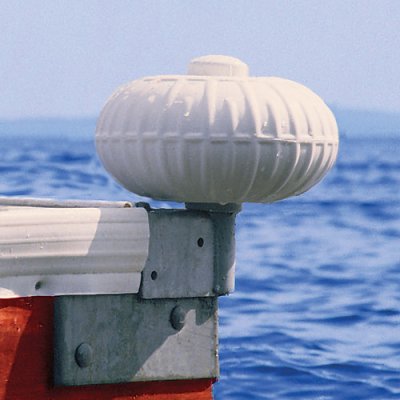Mischief Managed
Guru
- Joined
- Oct 24, 2018
- Messages
- 678
- Location
- USA
- Vessel Name
- Mischief Managed II
- Vessel Make
- 1992 Tollycraft 44 CPMY
In our slip, when the tide is going out, we have to deal with current that pushes our boat away from our finger dock and into our slip neighbor's boat. There is nothing but a gap between the two boats, no piling to bounce off. When the tide is coming in, we have the opposite problem and installed dock wheel on the end corner of our dock to prevent damage as the boat gets pushed into the corner while I back it in. I came up with what I think is a slick solution for when the tide is going out, using the dock wheel as a pulley. Thought others might benefit from my idea. It may not be new, but I've never seen it done, so it's new to me. It was also new to all my marina neighbors.
We start with a long line (blue in the terrible sketch below) tied to the starboard bow cleat and run all the way aft, outside the railings. My wife stands in the cockpit and drops the line over the dock wheel (orange in the terrible sketch below) as we start to enter the slip. She then puts a couple of turns on the starboard stern cleat so it is secure, but she can adjust slack as needed. As the boat is backed in, the line rotates the dock wheel at the base and tension on the line keeps the boat close to the dock. As the bow cleat gets even with dock wheel, tension on the line increases and draws the boat up tight to the dock while it halts rearward progress. My wife then secures a short dock line to the starboard stern cleat and the boat is secure enough to shut the engines down and tie it to the dock correctly.
We start with a long line (blue in the terrible sketch below) tied to the starboard bow cleat and run all the way aft, outside the railings. My wife stands in the cockpit and drops the line over the dock wheel (orange in the terrible sketch below) as we start to enter the slip. She then puts a couple of turns on the starboard stern cleat so it is secure, but she can adjust slack as needed. As the boat is backed in, the line rotates the dock wheel at the base and tension on the line keeps the boat close to the dock. As the bow cleat gets even with dock wheel, tension on the line increases and draws the boat up tight to the dock while it halts rearward progress. My wife then secures a short dock line to the starboard stern cleat and the boat is secure enough to shut the engines down and tie it to the dock correctly.


